 Kia Forte: Side air bag
Kia Forte: Side air bag
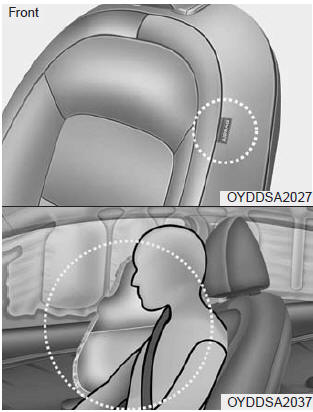
Your vehicle is equipped with a side air bag in each front seat.
The purpose of the air bag is to provide the vehicle's driver and/or the front passenger with additional protection than that offered by the seat belt alone.
The side air bags are designed to deploy only during certain sideimpact collisions, depending on the crash severity, angle, speed and point of impact. The side air bags are not designed to deploy in all side impact situations.
WARNING - Unexpected deployment
Avoid impact to the side air bag sensor when the ignition switch is ON to prevent unexpected deployment of the side air bag.
The side air bag is supplemental to the driver's and the passenger's seat belt systems and is not a substitute for them. Therefore your seat belts must be worn at all times while the vehicle is in operation.
For best protection from the side air bag system and to avoid being injured by the deploying side air bag, both front seat occupants should sit in an upright position with the seat belt properly fastened. The driver's hands should be placed on the steering wheel at the 9:00 and 3:00 positions. The passenger's arms and hands should be placed on their laps.
WARNING - Deployment
Do not install any accessories including seat covers, on the side or near the side air bag as this may affect the deployment of the side air bags.
If seat or seat cover is damaged, have the vehicle checked and repaired by an authorized Kia dealer.
Inform that your vehicle is equipped with side air bags and an occupant detection system.
WARNING - Flying objects
Do not place any objects (an umbrella, bag, etc.) between the front door and the front seat. Such objects may become dangerous projectiles if the side air bag inflates.
Curtain air bag
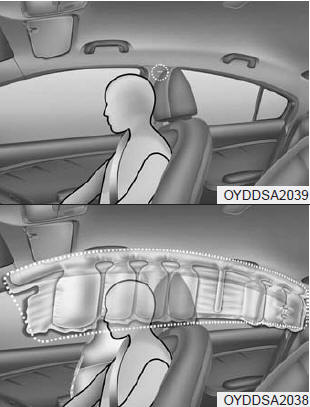
Curtain air bags are located along both sides of the roof rails above the front and rear doors.
They are designed to help protect the heads of the front seat occupants and the rear outboard seat occupants in certain side impact collisions.
The curtain air bags are designed to deploy only during certain side impact collisions, depending on the crash severity, angle, speed and impact. The curtain air bags are not designed to deploy in all side impact situations, collisions from the front or rear of the vehicle or in most rollover situations.
Do not allow the passengers to lean their heads or bodies onto doors, put their arms on the doors, stretch their arms out of the window, or place objects between the doors and passengers when they are seated on seats equipped with side and/or curtain air bags.
✽ NOTICE
Never try to open or repair any components of the side curtain air bag system. This should only be done by an authorized Kia dealer.
Why didnŌĆÖt my air bag go off in a collision? (Inflation and noninflation conditions of the air bag)
There are many types of accidents in which the air bag would not be expected to provide additional protection.
These include rear impacts, second or third collisions in multiple impact accidents, as well as low speed impacts.
Air bag collision sensors
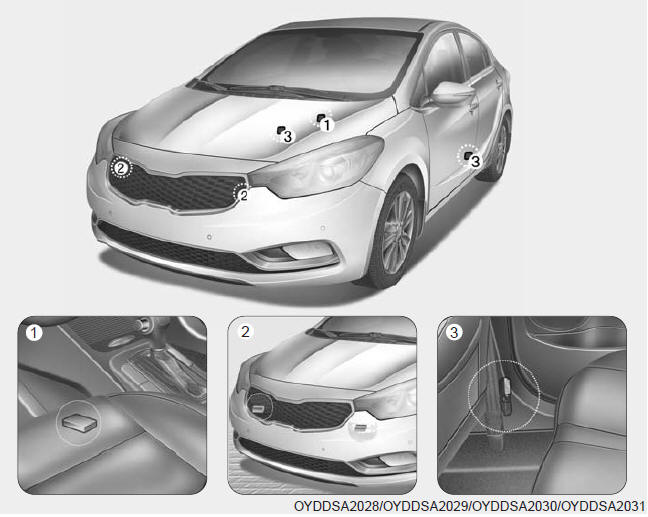
(1) SRS control module
(2) Front impact sensor
(3) Side impact sensor
WARNING - Air bag sensors
- Do not hit or allow any objects to impact the locations where air bag or sensors are installed. This may cause unexpected air bag deployment, which could result in serious personal injury or death.
- If the installation location or angle of the sensors is altered in any way, the air bags may deploy when they should not or they may not deploy when they should. Therefore, do not try to perform maintenance on or around the air bag sensors. Have the vehicle checked and repaired by an authorized Kia dealer.
Problems may arise if the sensor installation angles are changed due to the deformation of the front bumper, body or B pillar where side collision sensors are installed. Have the vehicle checked and repaired by an authorized Kia dealer.
Installing aftermarket bumper guards or replacing a bumper with non-genuine parts may adversely affect your vehicleŌĆÖs collision and air bag deployment performance.
Air bag inflation conditions
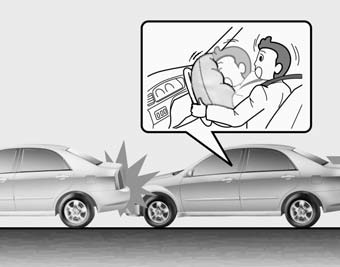
Front air bags
Front air bags are designed to inflate in a frontal collision depending on the intensity, speed or angles of impact of the front collision.
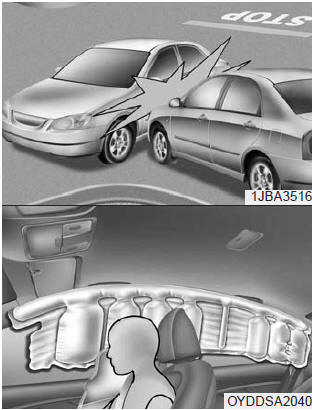
Side air bags
Side air bags (side and/or curtain air bags) are designed to inflate when an impact is detected by side collision sensors depending on the strength, speed or angles of impact resulting from a side impact collision.
Although the front air bags (driverŌĆÖs and front passengerŌĆÖs air bags) are designed to inflate in frontal collisions, they also may inflate in other types of collisions if the front impact sensors detect a sufficient frontal force in another type of impact. Side and curtain air bags are designed to inflate in certain side impact collisions.
They may inflate in other type of collisions where a side force is detected by the sensors.
If the vehicle chassis is impacted by bumps or objects on unimproved roads or sidewalks, air bags may deploy. Drive carefully on unimproved roads or on surfaces not designed for vehicle traffic to prevent unintended air bag deployment.
Air bag non-inflation conditions
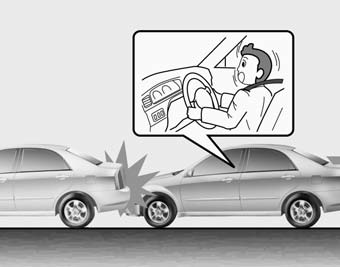
In certain low-speed collisions the air bags may not deploy. The air bags are designed not to deploy in such cases because they may not provide benefits beyond the protection of the seat belts in such collisions.
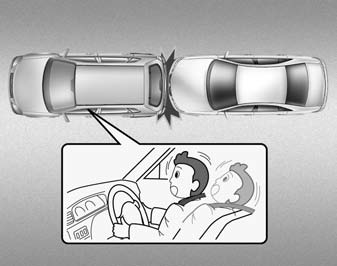
Air bags are not designed to inflate in rear collisions, because occupants are moved backward by the force of the impact. In this case, inflated air bags would not be able to provide any additional benefit.
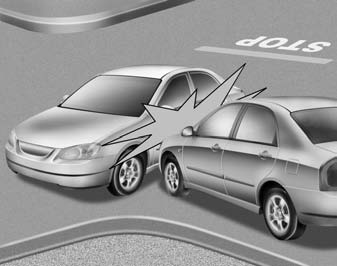
Front air bags may not inflate in side impact collisions, because occupants move to the direction of the collision, and thus in side impacts, front air bag deployment would not provide additional occupant protection.
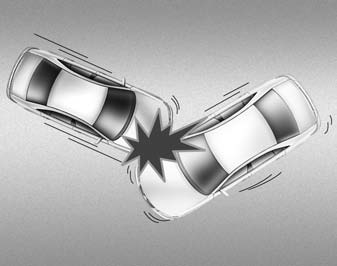
In a slant or angled collision, the force of impact may direct the occupants in a direction where the air bags would not be able to provide any additional benefit, and thus the sensors may not deploy any air bags.
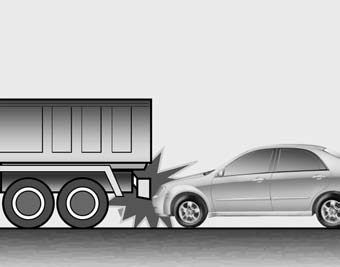
Just before impact, drivers often brake heavily. Such heavy braking lowers the front portion of the vehicle causing it to ŌĆ£rideŌĆØ under a vehicle with a higher ground clearance.
Air bags may not inflate in this "under-ride" situation because deceleration forces that are detected by sensors may be significantly replaced by such ŌĆ£under-rideŌĆØ collisions.
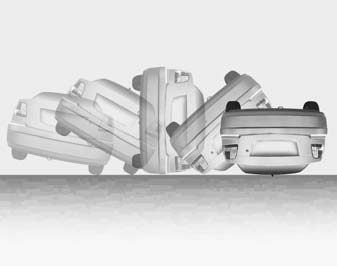
Air bags does not inflate in most rollover accidents (even if the vehicle is equipped with side impact air bags and curtain air bags).
However, side impact and curtain air bags may inflate when the vehicle is rolled over by a side impact collision, if the vehicle is equipped with side impact air bags and curtain air bags.
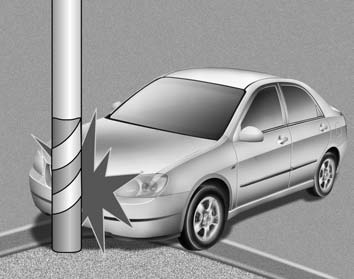
Air bags may not inflate if the vehicle collides with objects such as utility poles or trees, where the point of impact is concentrated to one area and the full force of the impact is not delivered to the sensors.
 Driver's and passenger's front air bag
Driver's and passenger's front air bag
Your vehicle is equipped with an Advanced Supplemental Restraint (Air Bag) System
and lap/shoulder belts at both the driver and passenger seating position.
The indications of the system's pr ...
 SRS Care
SRS Care
The SRS is virtually maintenance-free and there are no parts you can safely service
by yourself. If the SRS air bag warning light does not illuminate, or continuously
remains on, have your vehicle i ...
See also:
Ambient Temperature Sensor Description
The ambient temperature sensor is located at the front of the condenser
and detects ambient air temperature. It is a negative type thermistor; resistance
will increase with lower temperature, ...
Lift And Support Points
When heavy rear components such as suspension, fuel tank, spare tire,
tailgate and trunk lid are to be removed, place ad ...
Rear Oil Seal Components
1. Rear oil seal
...
